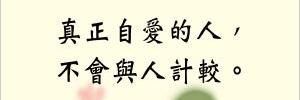英文簡歷之24秘笈
手機:M版 分類:簡歷技巧 編輯:pp958
1. What IS a resume anyway
Remember: a Resume is a self-promotional document that presents you in the best possible light, for the purpose of getting invited to a job interview. It”s not an official personnel document. It”s not a job application. It”s not a "career obituary"! And it”s not a confessional.
2. What should the resume content be about
It”s not just about past jobs! It”s about YOU, and how you performed and what you accomplished in those past jobs--especially those accomplishments that are most relevant to the work you want to do next. A good resume predicts how you might perform in that desired future job.
3. What”s the fastest way to improve a resume
Remove everything that starts with "responsibilities included" and replace it with on-the-job accomplishments. (See Tip 11 for one way to write them.)
4. What is the most common resume mistake made by job hunters
Leaving out their Job Objective! If you don”t show a sense of direction, employers won”t be interested. Having a clearly stated goal doesn”t have to confine you if it”s stated well.
5. What”s the first step in writing a resume
Decide on a job target (or "job objective") that can be stated in about 5 or 6 words. Anything beyond that is probably "fluff" and indicates a lack of clarity and direction.
6. How do you decide whether to use a Chronological resume or a Functional one
The Chronological format is widely preferred by employers, and works well if you”re staying in the same field (especially if you”ve been upwardly-mobile). Only use a Functional format if you”re changing fields, and you”re sure a skills-oriented format would show off your transferable skills to better advantage; and be sure to include a clear chronological work history!
7. What if you don”t have any experience in the kind of work you want to do
Get some! Find a place that will let you do some volunteer work right away. You only need a brief, concentrated period of volunteer training (for example, 1 day a week for a month) to have at least SOME experience to put on your resume. Also, look at some of the volunteer work you”ve done in the past and see if any of THAT helps document some skills you”ll need for your new job.
8. What do you do if you have gaps in your work experience
You could start by looking at it differently. General Rule: Tell what you WERE doing, as gracefully as possible--rather than leave a gap. If you were doing anything valuable (even if unpaid) during those so-called "gaps" you could just insert THAT into the work-history section of your resume to fill the hole. Here are some examples:
1993-95 Full-time parent -- or
1992-94 Maternity leave and family management -- or
Travel a
此文章共有4頁 1 2 3 4

相關範文
- ·英文簡歷必殺24秘笈
- ·應屆畢業生英文簡歷之銷售助理
- ·英文簡歷模板系列1:有工作經驗者英文
- ·英文簡歷模板系列3:應聘後勤英文簡歷
- ·英文簡歷模板系列4:會計師英文簡歷
- ·英文簡歷模板系列2:應聘前台英文簡歷
- ·從英文簡歷的格式說起,如何寫英文簡歷
- ·國外英文簡歷與國內英文簡歷的區別
- ·英文簡歷模板系列5:管理人員英文簡歷
- ·英文個人簡歷之translator
- ·英文個人簡歷模板24:行政助理求職簡
- ·電子簡歷之無極寶典
- ·英文求職信之秘笈大公開
- ·英文簡歷模板系列6:銷售助理個人簡歷
- ·英文簡歷模板16:人力資源總監個人簡
- ·英文簡歷模板系列9:秘書個人簡歷
- ·英文簡歷模板系列7:人事助理個人簡歷
- ·英文簡歷模板系列15:工業工程師簡歷
- ·英文簡歷模板系列14:培訓協調員個人
- ·英文簡歷模板系列8:市場助理個人簡歷
- ·英文簡歷模板系列17:酒店文職簡歷寫
- ·英文簡歷模板系列11:文員求職簡歷
- ·英文簡歷模板13:技術工程師簡歷表
- ·英文簡歷模板系列22:律師個人簡歷范
- ·英文簡歷模板19:客戶服務代表的簡歷
- ·英文簡歷模板系列10:生產經理個人簡
- ·英文簡歷模板12:電子工程師簡歷
- ·英文簡歷模板系列21:應聘翻譯的簡歷
- ·英文簡歷模板系列18:人事專員簡歷寫
- ·記我的從教經歷之二三事
- ·經歷之後,你會懂得